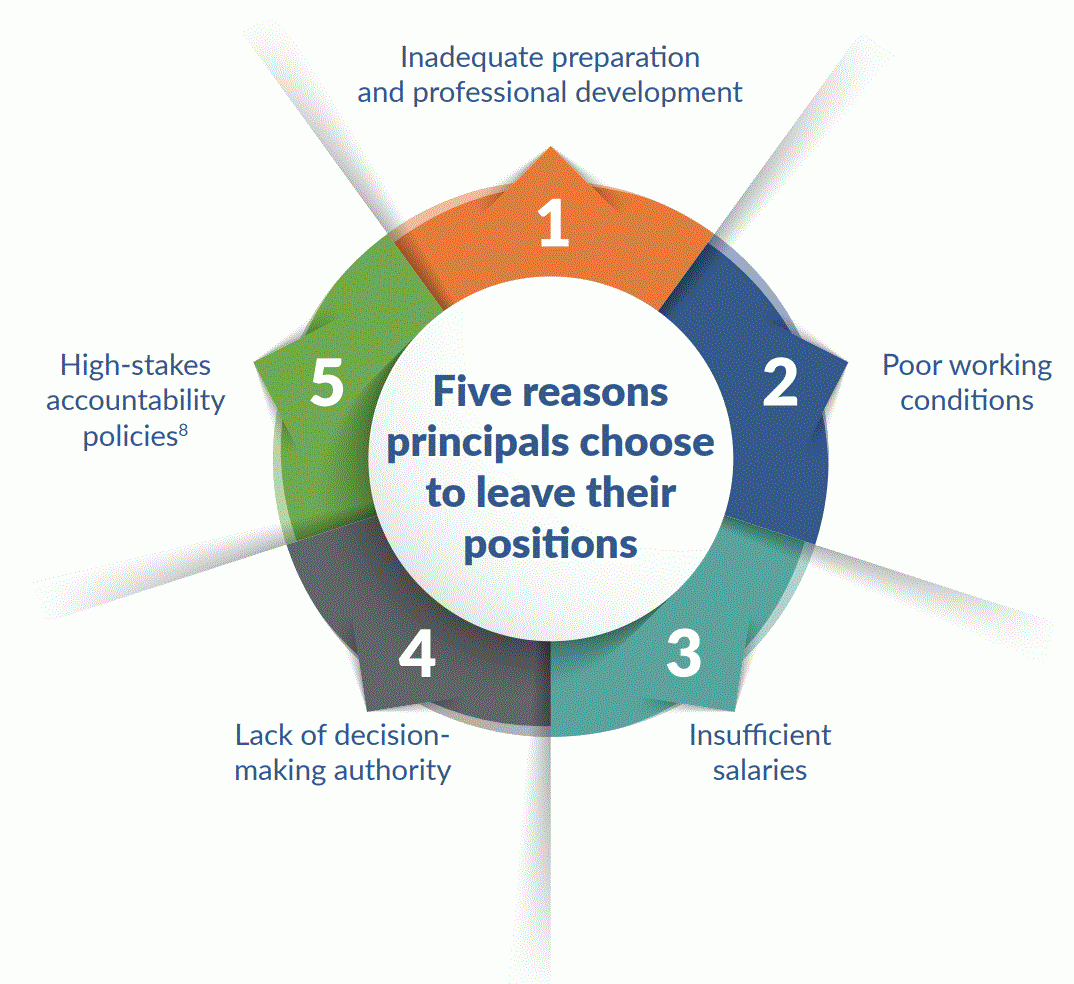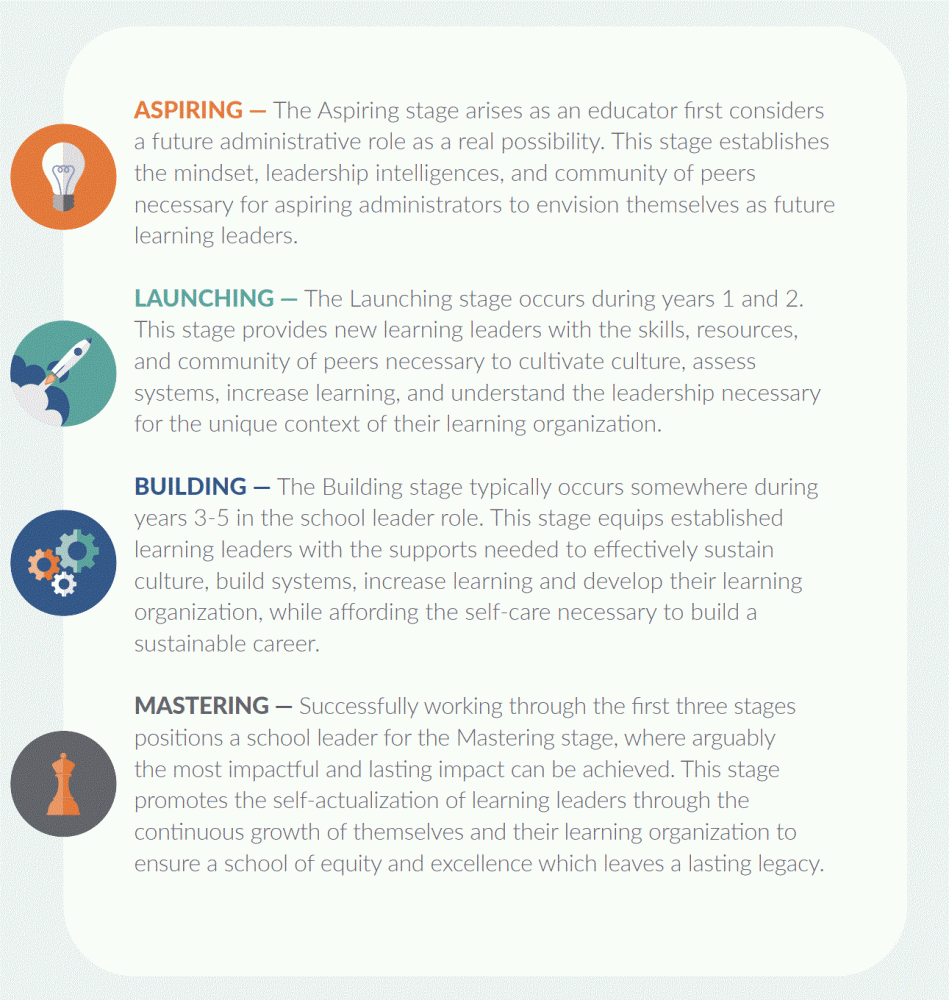School leadership matters. Common sense tells us this, but we now have plenty of research to back up this claim. In 2009, the Wallace Foundation determined in their report, Assessing the Effectiveness of School Leaders: New Directions and New Processes:
Effective leadership is vital to the success of a school. Research and practice confirm that there is a slim-chance of creating and sustaining high-quality learning environments without a skilled and committed leader to help shape teaching and learning.1
More recently, Wallace strengthened their position about the importance of school leadership, notably principal leadership, in its 2021 report, How Principals Affect Students and Schools: A Systemic Synthesis of Two Decades of Research, which states:
The impact of an effective principal has likely been understated, with impacts being both greater and broader than previously believed: greater in the impact on student achievement and broader in affecting other important outcomes, including teacher satisfaction and retention (especially among high-performing teachers), student attendance, and reductions in exclusionary discipline.2
Overall, schools require school leaders who are capable of collaboratively crafting an equity focused vision for their learning organization, cultivating a student-centered culture, building others’ leadership capacity, improving instruction, and leading school improvement efforts.3 Essentially, effective school leaders lead effective schools.4
While our understanding of school leadership’s importance has deepened, our Nation’s schools face a serious problem of practice – leadership churn. According to a 2019 report from the National Association of Secondary School Principals (NASSP) and the Learning Policy Institute (LPI), principals across the country have an average tenure of just four years at their schools.5 Drilling down into the data paints a starker picture showing that 35 percent of principals are in their schools less than 2 years with only 11 percent of principals leading their schools for 10+ years. The School Leaders Network plainly states that only 1 in 4 principals stay in a given position longer than 5 years.6 Of those that are brand new to the principalship, fifty percent do not make it past year three.
School leaders choose to leave their positions for a variety of reason both positive and negative. District level opportunities or other building level positions may motivate individuals to move on. While these transitions are likely positive in most circumstances, negative forces have been mounting over the past couple of decades that keep prospective leaders from considering school leadership as a career path, push individuals out of positions, or cause some to leave the profession altogether. These forces include longer hours, tough political environments, mounting mandates, and rising expectations not backed with adequate resources.7 In their 2019 report, Understanding and Addressing Principal Turnover, NASSP and LPI identified five reasons principals choose to leave their positions:

The costs of school leadership churn are high in terms of its impact on the ability of school leaders to enact meaningful change in their schools, on student performance, and on the bottom line. For example, research tells us it takes 5 to 10 years for a principal to lead and institutionalize improvement efforts depending on the size of their school.9 Further, student performance in math and English-Language Arts typically falls the year after a principal leaves with the next principal needing up to three years to make up the loss.10 Where the bottom line is concerned, preparing and onboarding a new principal carries an average price tag of $75,000 nationally.11
In order to combat leadership churn in our schools, we at the IPA with our friends in the School Leader Collaborative (the Collaborative) have worked together to develop an ever-growing suite of professional learning and resources to support school leaders over their entire careers. Our School Leader Continuum observes a sequence of four career stages (Aspiring, Launching, Building, and Mastering), each with its unique core need for support.

Please visit the pages for each stage of leadership for a listing of the professional learning and resources developed by the Collaborative. The various supports are categorized in a way (LEAD, ENGAGE, ADVOCATE, LEARN) to help you understand all the Continuum entails. Anchored in our leadership framework, the School Leader Paradigm, the purpose of these growth opportunities and tools is to help you evolve into a learning leader leading your learning organization.
Many of the supports outlined are freely available to those who are members of the Illinois Principals Association (IPA) or one of the other Collaborative associations. Some supports require an additional fee. As an added bonus, we have also included the many ways you can give back to the profession like serving in a leadership capacity within the association, engaging in advocacy with policymakers, and mentoring or coaching another school leader.
Please contact us anytime at the IPA at 217-525-1383 or email support@ilprincipals.org if you have any questions about the School Leader Continuum. We are grateful for you and your leadership. You matter!
Endnotes
1. Wallace Foundation. (2009). Assessing the effectiveness of school leaders: New directions and new processes. Retrieved from http:// wallacefoundation.org/knowledge-center/ Documents/Assessing-the-Effectiveness-of-School-Leaders.pdf
2. Grissom, J. A., Egalite, A. J., & Lindsay, C.A. (2021). How principals affect students and schools: A systematic synthesis of two decades of research. New York: The Wallace Foundation.
3. Mendels, P. (2012). The effective principals, JSD, 33(1) 54-58. Oxford, OH: Learning Forward. Retrieved from http:// glisi.org/wp-content/uploads/2015/01/ The-Effective-Principal_JSD.pdf
4. Goldring, E., Porter, A., Murphy, J., Stephen, N. E., & Cravens, X. (2009). Assessing learning-centered leadership: Connections to research, professional standards, and current practices. Leadership and Policy in Schools, 8(1), 1-36. Doi:10.1080/15700760802014951; Thompson, T. G., & Barnes, R. E. (2007). Beyond NCLB: Fulfilling the promise to our nation’s children. Washington, D.C.: Aspen Institute.
5. Levin, S. & Bradley, K. (2019). Understanding and Addressing Principal Turnover: A Review of the Research. Reston, VA: National Association of Secondary School Principals.
6. School Leaders Network. (2014). Churn: The high cost of principal turnover. Retrieved from https://www.carnegie. Org/news/articles/the-high-cost-of-principal-turnover/
7. Johnson, L. (2005). Why principals quit. Principal. National Association of Elementary School Principals.; Metropolitan Life Insurance Company. (2013). The MetLife Survey of the American Teacher: Challenges for school leadership. New York, NY: Author. Retrieved from https:// www.metlife.com/assets/cao/foundation/MetLife-Teacher-Survey-2012.pdf
8. Levin, S. & Bradley, K. (2019)
9. The Wallace Foundation. (2013). The school principal as leader: Guiding schools to better teaching and learning. Retrieved from http://www.wallacefoundation. Org/knowledge-center/ Documents/ The-School-Principal-as-Leader-GuidingSchools-to-Better-Teaching-and-Learning-2nd-Ed.pdf
10. Beteille, T., Kalogrides, D., & Loeb, S. (2011). Stepping stones: Principal career paths and school outcomes. Working Paper Series (17243)
11. School Leaders Network. (2014)




 Aspiring
Aspiring Launching
Launching Building
Building Mastering
Mastering






